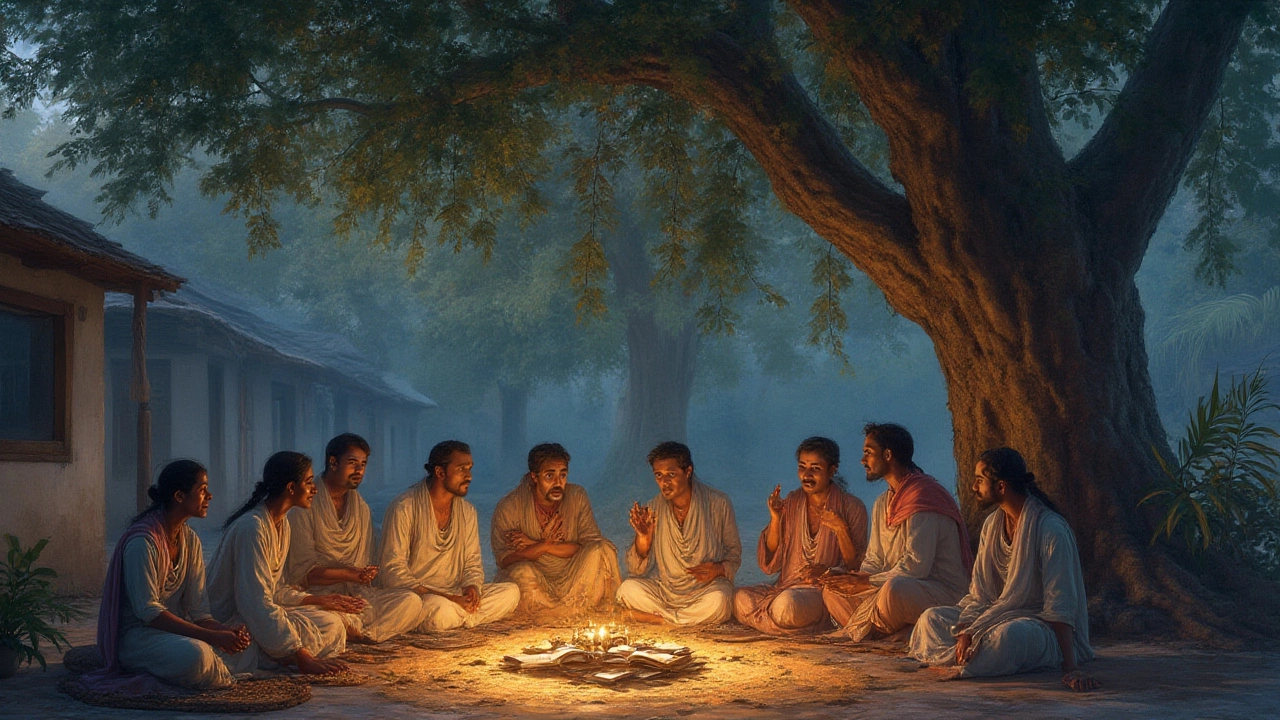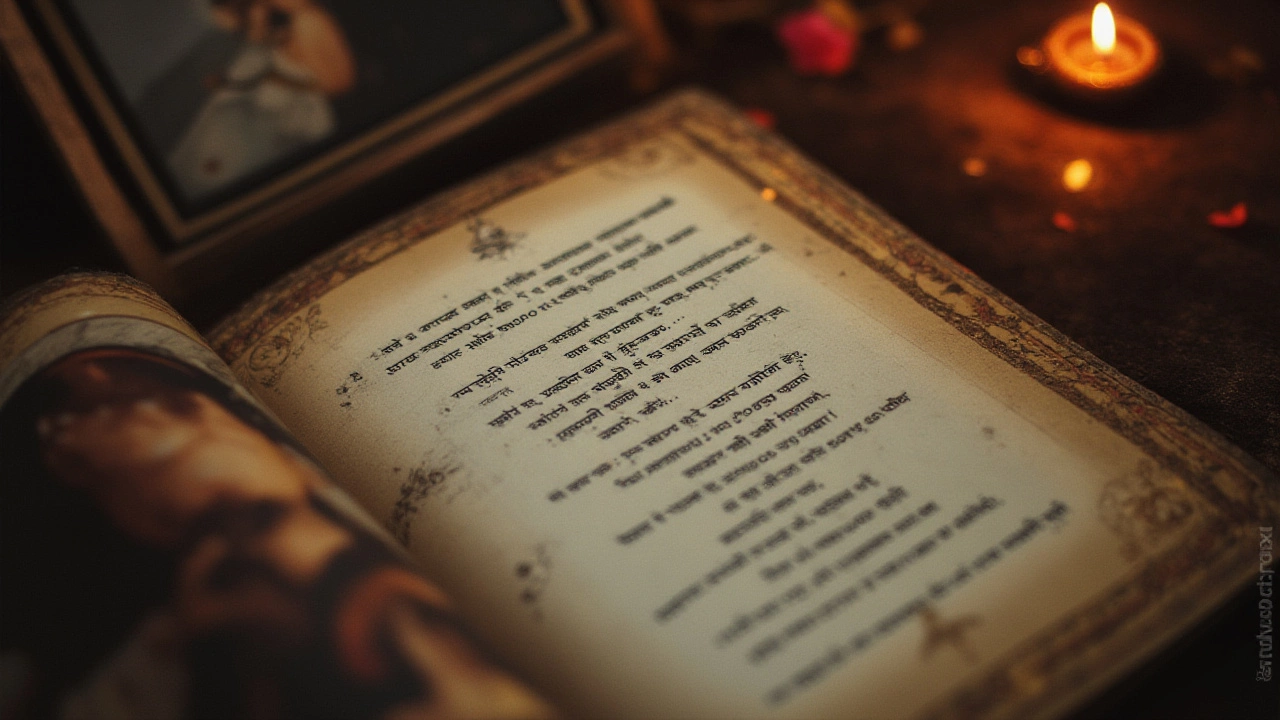Mournful Poems Explained: What Are They Called and How Do They Touch Hearts?
 Jul, 30 2025
Jul, 30 2025
Ever read a poem that lingers with you for days, tugging at your heart, making your chest ache just a little? These aren't just "sad poems"—they’re often crafted as a way to grieve, to remember, to process unbearable loss. If you’ve ever wondered what these powerful poems are actually called, you’re not alone. The need to give a name to sorrow is as old as language itself. Strangely, though, most people can recite lines from a tough breakup song or a mourning poem without ever thinking of the official label. Yet poets—whether ancient Greeks or modern vloggers—have always reached for precise names for these works that give sorrow a voice.
What Are Mournful Poems Called? Unpacking Elegies, Laments, and More
So, what do you actually call a poem that deals with deep sadness or the pain of loss? The answer: an elegy. The word comes from ancient Greece, where an "elegos" was originally a song accompanied by a flute; before long, it became tied to mourning and remembrance rituals. Elegies aren’t just any sad poem—they’re poems of lament, often written in honor of someone who has died. A classic example: Thomas Gray’s “Elegy Written in a Country Churchyard,” which reflects on the forgotten dead in a rural cemetery. Or, think of W.H. Auden’s “Funeral Blues,” which went viral decades before that term existed, especially after being featured in the film "Four Weddings and a Funeral."
Laments are closely related, but there’s a subtle difference. Laments are older—a staple in literature from ancient Sumer to the Hebrew Bible. They’re a full-throated cry of pain, sometimes for a lost person, sometimes just crying out about the living world’s injustice. Take “The Lament for Ur” from 2000 BCE, or the Old Testament’s “Book of Lamentations.” Elegies, meanwhile, bring more meditation—they’re not just about crying out, but about processing, reflecting, sometimes even moving toward acceptance.
But let’s get practical: while “elegy” is the typical formal term, people sometimes use “dirge” (for a song of mourning, particularly at funerals) and even “threnody” (which is just a fancy way of saying “sad poem or song for the dead”). Here’s how those break down in a table, so you’ve got your poetry trivia sorted:
| Term | Meaning | Example |
|---|---|---|
| Elegy | Formal mourning poem, contemplative | “Elegy Written in a Country Churchyard” |
| Lament | Direct outpouring of grief, sometimes for personal or collective loss | “Book of Lamentations,” “Lament for Ur” |
| Dirge | Song or short poem for a funeral; often meant to be sung | “Dirge Without Music” by Edna St. Vincent Millay |
| Threnody | Poem or song mourning the dead (literary/rare) | Milton’s “Lycidas” |
Now, here’s something fun: not every sad poem is an elegy, and not every elegy is about death. Sometimes poets write elegies for lost youth, a vanished home, or the breakup of a friendship. The one thing tying them together? This vivid sense of loss that words alone are barely strong enough to hold.

Why Do People Write Mournful Poems? How Poetry Shapes Grief and Memory
It’s kind of wild, but research shows that people have turned to poetry in every known culture to process sadness. Why poetry, though, and not just letters or diary entries? Poems work differently. They use rhythm, sound, repetition, and strong images. That structure can turn chaotic thoughts into something almost soothing, even when the subject matter is dark. A 2017 study out of the University of Exeter found that writing and reading poetry can trigger the brain’s reward centers, especially during emotional events, making the act of creating (or reading) a mournful poem oddly comforting.
That’s not just theory. Look at real people: Maya Angelou wrote “When Great Trees Fall” after losing close friends, using poetry to grieve and teach. Edna St. Vincent Millay’s “Dirge Without Music” is famous for how it rages against the silence after death, and her refusal “to accept the universe.” When John Milton wrote “Lycidas” for a college friend lost at sea, he wasn’t just creating art for art’s sake—he was working through personal shock and public grief at once.
In 2020, the Poetry Foundation tracked a 145% jump in submissions tagged as “grief” or “loss.” Why? Global events—a pandemic, war, the ever-present sense of uncertainty—drove people to find meaning, memorialize, or just say: I am not alone in this. Poems became virtual candles lit in darkness, glimpses of hope or solidarity framed in memorable lines.
It’s not about just flooding the page with tears, either. The very structure of an elegy often has three parts: 1) Lamentation (expressing grief), 2) Praise (honoring what’s lost), and 3) Consolation (finding some kind of peace or closure). Writers across eras, from Catullus mourning his brother in ancient Rome to Claudia Rankine’s “Citizen” reflecting on collective grief, follow this path, whether they’re aware or not. This structure helps both writer and reader to acknowledge pain, but also to keep going, step by step.
But do you have to be a poet to write an elegy or lament? Not at all. Some of the most moving modern elegies are “found poems”—made from snippets of conversations, thoughts, social media posts. Anyone can start by jotting down memories, repeating phrases that come to mind, then shaping those into a rhythm that feels true. If you’re facing loss, even just copying out a favorite elegy, like Auden’s “Stop all the clocks,” can be a comfort. Actually, neuroscientists believe that reciting or reading poetry aloud slows the heart, regulating stress—even if you barely understand the words in the moment.
Tip: Try writing an elegy for something small—a favorite café closing, a beloved pet’s old collar—before tackling bigger losses. Focus on detail: what did you love, what do you miss, what memory comes sharpest?

Famous Mournful Poems and How They Resonate Today
Mournful poetry hasn’t gone out of fashion—not at all. Actually, some of the most viral poems on TikTok and Instagram are modern elegies and laments. Lines like “What will survive of us is love” from Philip Larkin’s “An Arundel Tomb” show up in wedding vows and yearbook quotes, even though the original poem turns on the sadness of time passing. Isn’t it strange how lines meant for mourning sometimes get repurposed for joy?
If you’re curious about what classics still break hearts today, here’s a short list worth reading (or re-reading):
- Sylvia Plath’s “Mary’s Song” – mourns lost youth, innocence, and hope, all in one tight, bruising poem.
- “Because I could not stop for Death” by Emily Dickinson – a playful, eerie look at what happens after we die.
- “To an Athlete Dying Young” by A.E. Housman – the bittersweet glory of dying at one’s peak.
- “On My First Sonne” by Ben Jonson – a simple, raw farewell to a son.
- Paul Celan’s “Fugue of Death” – a harrowing meditation on loss and history after the Holocaust.
Sometimes, even just streaming a playlist of funeral songs can introduce you to new modern elegies—songs by Nick Cave, Florence and the Machine, or Hozier echo the traditions of mournful poetry, just with guitars or synths instead of a lyre or pen.
And let’s talk technique. If you want to write an elegy that actually connects with someone, skip the big abstract words—focus on what’s real. Good elegies don’t use fancy “high” language, unless that's genuinely how you speak. They zoom in: a cracked mug left in the sink, the laugh you still hear, the smell of that cologne that’s never quite faded. It’s those details that bring sorrow into the room, but also make it livable. If you’re sharing your elegy online, try tagging your poem as both “poetry” and “grief community”—these networks, as recent surveys show, are some of the kindest, most supportive places on the internet.
Maybe the most surprising thing? Mournful poems often end with hope, or at least with survival. The cliché is that grief poems are just about feeling bad, but the best ones become a place to connect, to heal, or at the very least, to remember together. If you’re ever at a loss for words, you’re in good company—and the right poem might be waiting just one search away.